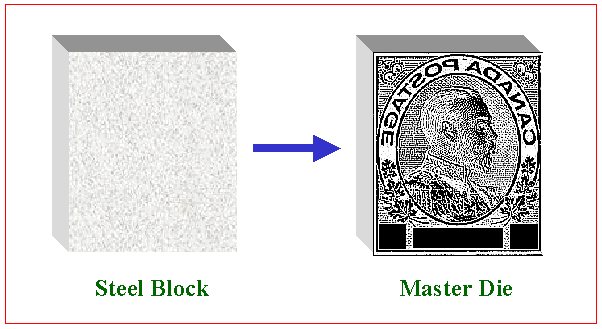 |
The Admiral stamps were printed by the Ottawa subsidiary of the American Bank Note Company using the line-engraving method, also known as recessed. With this method, the portions of the stamp design that are meant to be white when printed, such as the lettering CANADA POSTAGE, are left raised, and the part of the design that is meant to be coloured is engraved out of the surface of the steel block.
 |
An original or master die of the basic design, less the numeral and text denoting the denominations, as well as some other details, was engraved in recess as a reverse image onto a steel block. Fine lines were cut into the steel, where the colour was supposed to be, to hold the ink during the printing process.
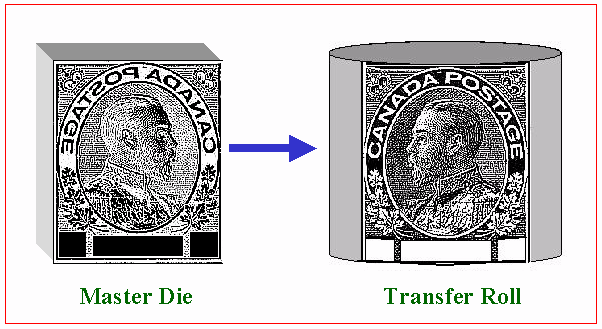 |
Once hardened, the master die was used to prepare a transfer roll, with the design in relief, that is, the raised portions of the design on the master die become indented portions of the design on the transfer roll. This roll was a soft steel cylinder about 7.5 cm (3 inches) in diameter, which would be placed in a transfer press, and would then be rolled, or rocked, under extreme pressure over the die. It is thought that six separate impressions, or reliefs, could be made on one cylinder. A die, when placed on a device such as a transfer roll, is often referred to as a roller die.
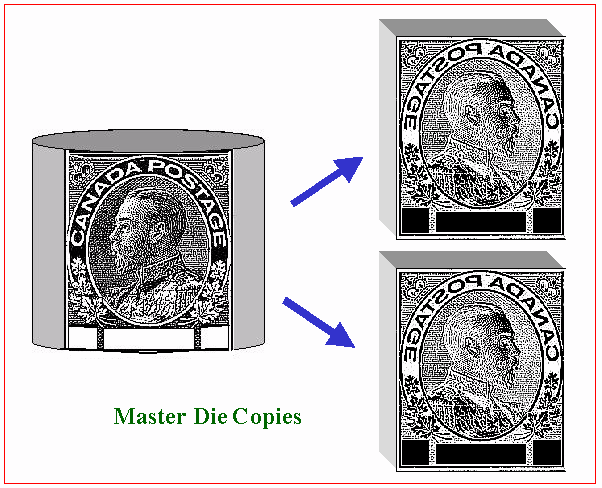 |
The transfer roll was then hardened and used to make up the master die blanks for each denomination, with the portions of design that were in relief on the transfer roll becoming recessed once again on the master die copies.
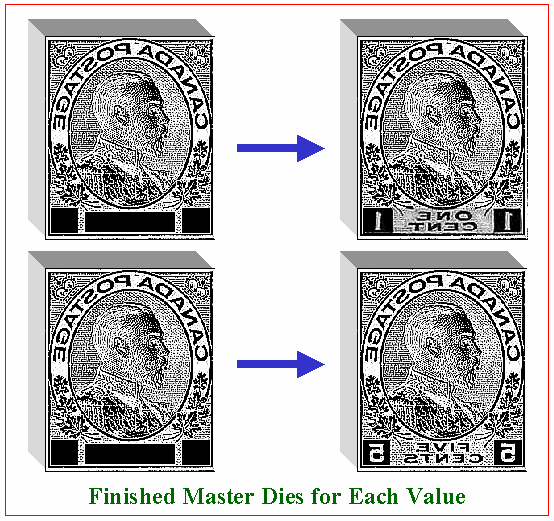 |
These blanks were then engraved individually to create the master dies for each denomination.
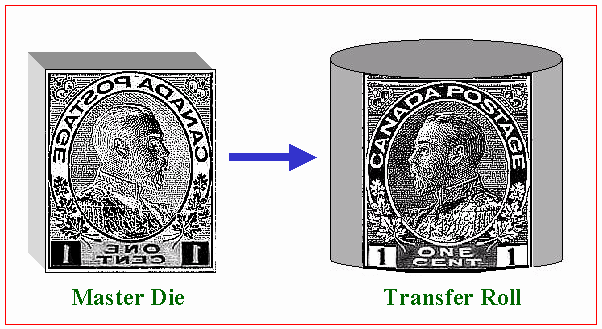 |
The master dies for each denomination were then used to prepare the transfer rolls needed to make up the subjects on each individual printing plate.
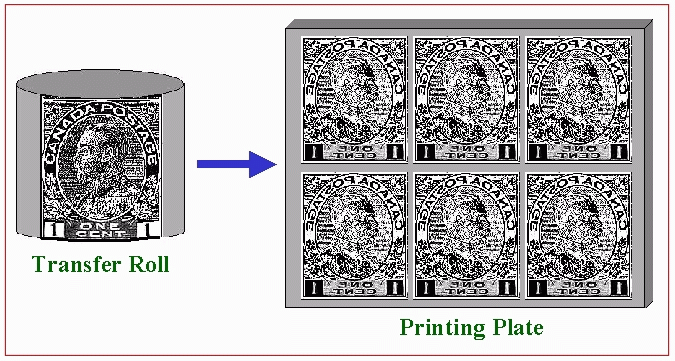 |
Only one relief, usually the best on the completed transfer roll, was used at a time, continuing until the entire plate was completed. This process too needed great pressure, and between two and four hundred of the rocking applications would be made with great skill and precision to achieve the required result. (See Formats for a description of the various plate arrangements or types.)
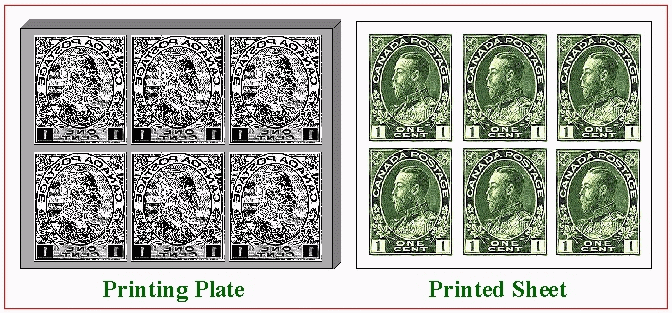 |
Finally, the plates were inked and used to print the design onto sheets of paper. The sheets were usually then perforated and severed into panes before being issued to the post office.
In 1915, an experiment was carried out with the two-cents issue to transfer a larger number of subjects, and rolls with ten and twenty subjects were used. Later, with the three-cents issue, a roll of sixteen subjects was attempted, but the overall results were not considered satisfactory.
Updated: 5 Oct 97